Openings
Your opening means everything. It determines what type of game is going to be played, how well you’ll be able to develop your pieces, and might even give you a psychological edge over your opponent.
Theoretically, you could open any way you like—as long as your moves are legal. But not every move or sequence of moves is equally strong. Over time, only the strongest openings remained and received names.
Usually, white will choose the style the game is going to be with their opening or first move. Black then responds with the appropriate opening themself, which we usually call a defence.
A game can be in two (general) styles.
- Open: The pawns in the centre of the board have been removed. Even if all other pawns are locked in, this provides passage for all pieces to move to the other side of the board.
- Closed: the pawns in the centre of the board are locked in or at least still present. The sides of the field are also occupied or the files shut off.
When choosing an opening it’s always a trade-off between security (defence) and possibilities (offence).
Opening with your center pawns and knights will give you control over the centre, but creates vulnerabilities if the enemy attacks via the diagonals.
Opening with your knights and pawns on the sides creates fewer vulnerabilities, but limits your attacking options considerably.
Therefore, choose your opening based on the type of game you want to play. But also the game your opponent wants to play. Using an opening they don’t expect, or that doesn’t fit at all with their playing style, gives you a slight psychological advantage.
This chapter shows the most common and successful openings and defences. They are ordered by winning percentage: first one led the most wins in professional games, second one slightly fewer, etcetera.
Don’t think, however, you should only learn the opening with the best statistics. Different opponents require different openings. If you play black, you depend on white’s opening anyway, and simply need to know the appropriate response.
Many people quickly exchange pawns, knights and bishops in the opening of the game. They think: “oh well, it is an equal exchange, and I’ve still got all those other pieces.” Don’t. Chess is most interesting and creative when the most pieces are still on the board. Playing matches like this, is the same as playing a card game but removing 75% of the deck before you even start.
While not vital to playing chess, it is useful to learn about how notation for chess games works. Every opening here has its sequence of moves written down in the official way. I’ve added a last, optional chapter to this course about that: Chess Notation
Openings for White
Queen’s Gambit
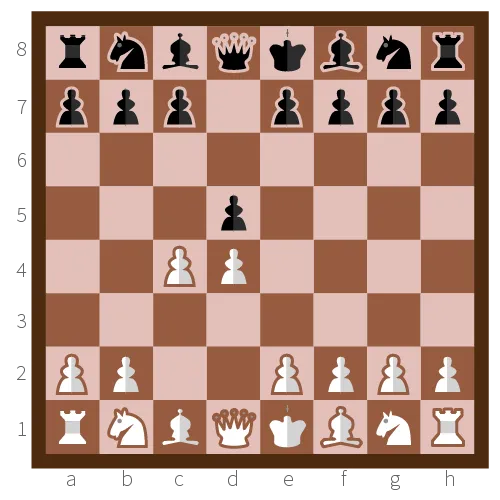
- d4 d5
- c4 …
Black can now either accept (capture your pawn) or decline. If he accepts, you’ll lose a pawn but gain a great positional advantage (and usually, you win that pawn back). If he declines, you still control the centre.
English Opening
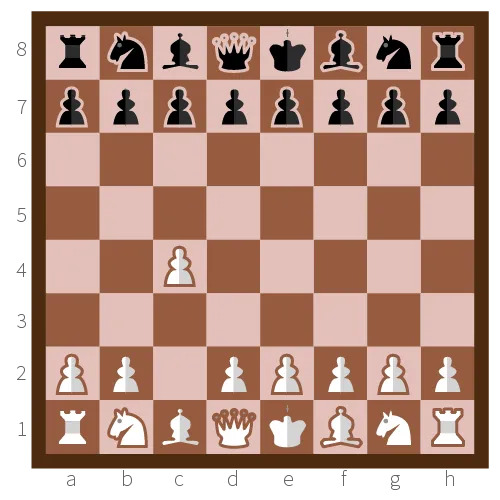
- c4
A highly successful opening. It still puts pressure on the centre, but also allows for faster piece development.
King’s Indian Attack
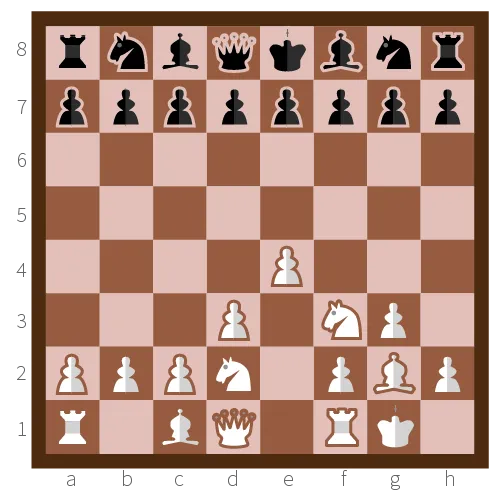
- e4 …
- d3 …
- Nd2 …
- Ngf3 …
- Bg2 …
- 0-0
It mostly controls the centre, but also allows for quick castling and a very strong kingside (defensively).
Ruy Lopez
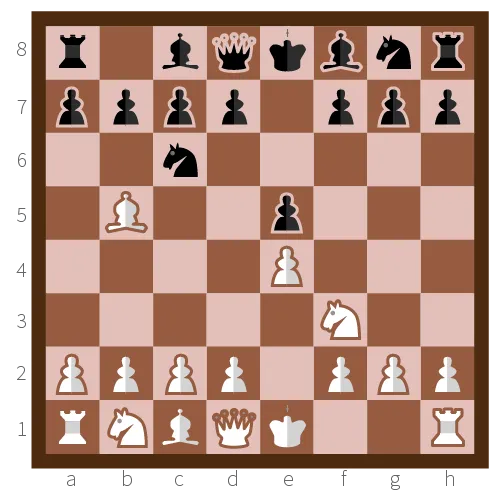
- e4 e5
- Nf3 Nc6
- Bb5 …
Very popular. It immediately puts pressure on black, while still creating room to castle and controlling some of the centre.
Four Knights Defence
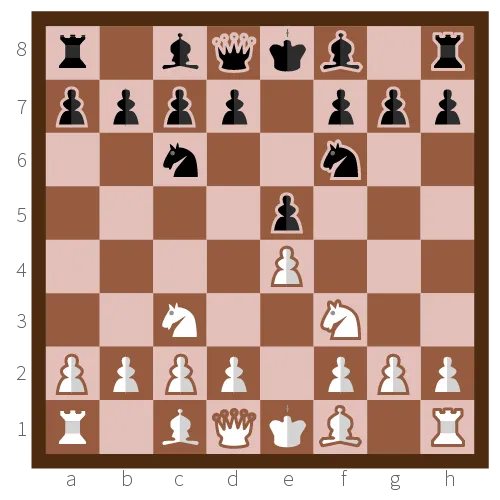
- e4 e5
- Nf3 Nc6
- Nc3 Nf6
A symmetrical opening, which usually creates a defensive and positional game. Both sides are equal after the first three moves, and it will be hard to quickly set up an attack (for black more than for white though).
Giuoco Piano
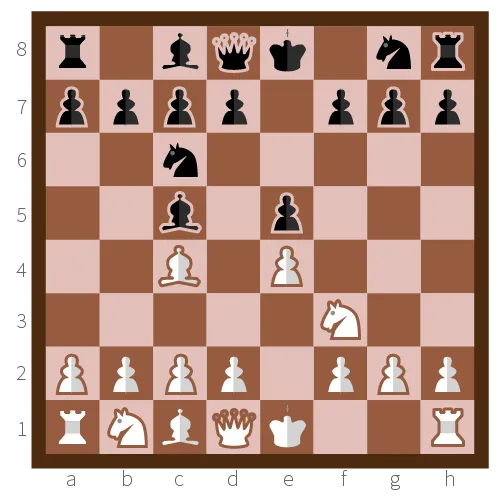
- e4 e5
- Nf3 Nc6
- Bc4 Bc5
Translated from Italian it means “quiet game”. White dominates the centre by preventing any movement from black through it. Black usually tries to exchange pieces to free up the centre—prevent that.
Ponziani Opening
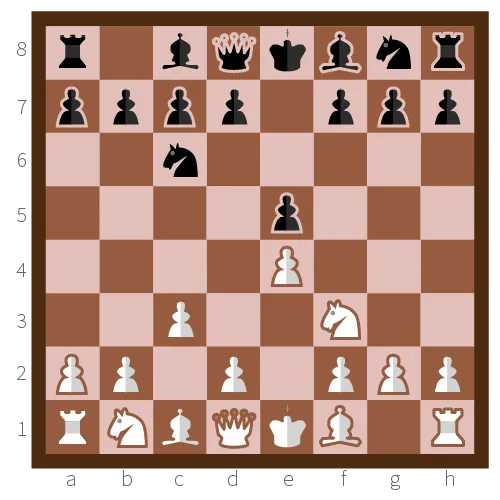
- e4 e5
- Nf3 Nc6
- c3 Nf6
- d4 …
The main purpose is to create a strong pawn structure, but it also opens up diagonals for white’s bishops and queen. His queenside knight is trapped for now though.
Bishop’s Opening
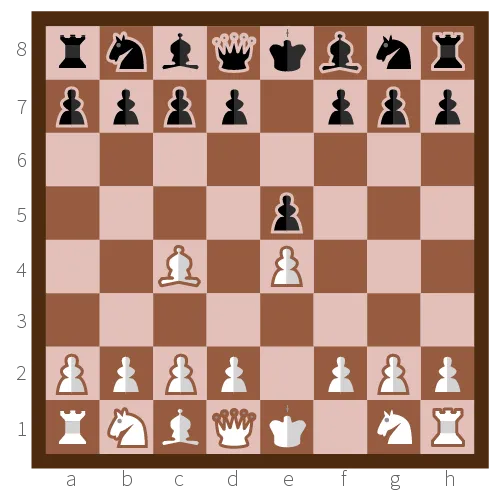
- e4 e5
- Bc4 …
Prevents black from marching into the centre, while leaving the f-pawn unblocked (f4 is a common follow-up move) for more centre pressure.
Benko’s Opening
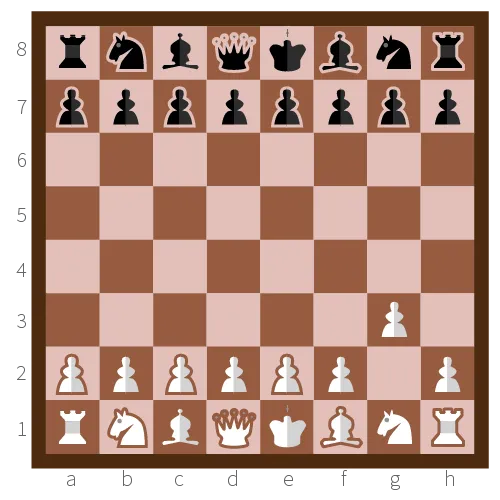
- g3
Usually followed up by Bg2 and/or Nf3. Creates a very strong kingside defence, while also placing the bishop on its favourite diagonal. Doesn’t necessarily do much good for the centre or pawn structure.
Blackmar-Diemer Gambit
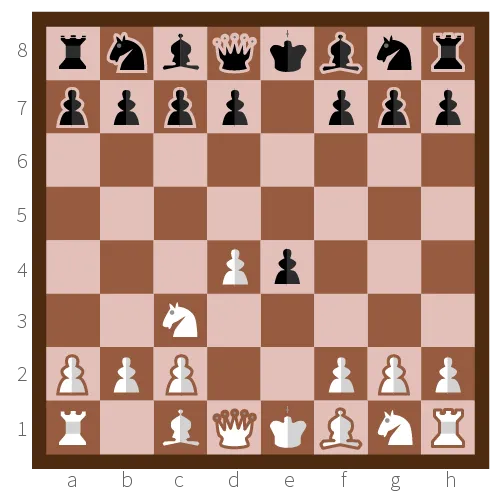
- d4 d5
- e4 dxe4
- Nc3 …
- f3 …
Just as with the Queen’s gambit, white lets black take a pawn to rapidly develop and activate his pieces. White usually wins back the pawn, as black will have a hard time defending such an advanced pawn in the beginning of the game. A very attacking opening, but risky.
Openings for Black
Nimzo-Indian Defence
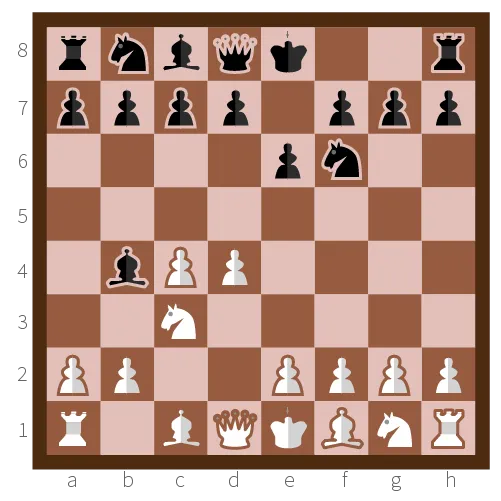
- d4 Nf6
- c4 e6
- Nc3 Bb4
A flexible defence that wants to force double pawns on White’s side early in the game.
Pirc Defence
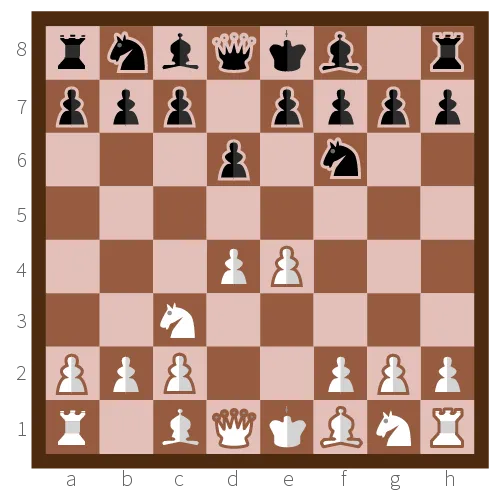
- e4 d6
- … Nf6
- … g6
- … Bg7
Black allows white the centre and plays via the flanks. With good support, it can then even launch attacks on the centre from there.
Sicilian Defence
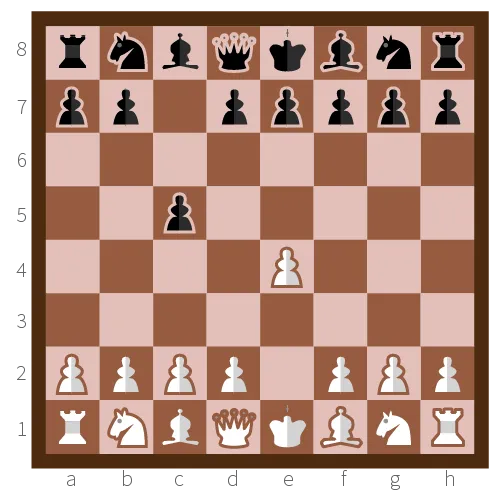
- e4 c5
Black plays for the advantage, but has to watch out that it doesn’t fall victim to an early attack from white. Black plays for the centre without giving up kingside security or pawn structure.
French Defence
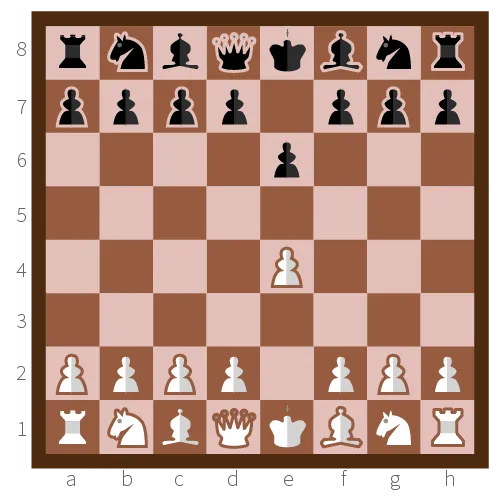
- e4 e6
Creates a cramped and restricted game for black in the early stages, but black gains counterattacking possibilities on the queenside. White will most likely focus on the kingside.
Alekhine Defence
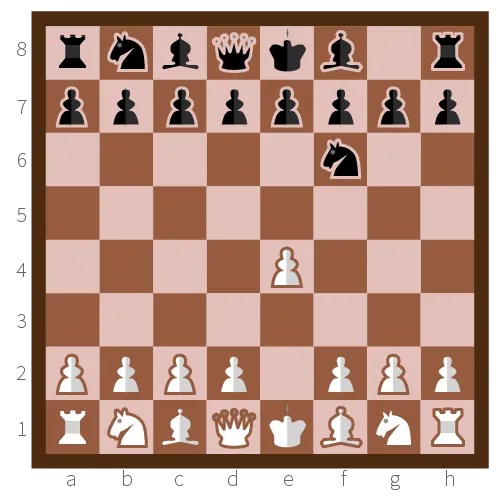
- e4 Nf6
A very attacking and aggressive move. It temps White’s pawn(s) forward, trying to trap them and undermine the structure later.
Robatsch Defence
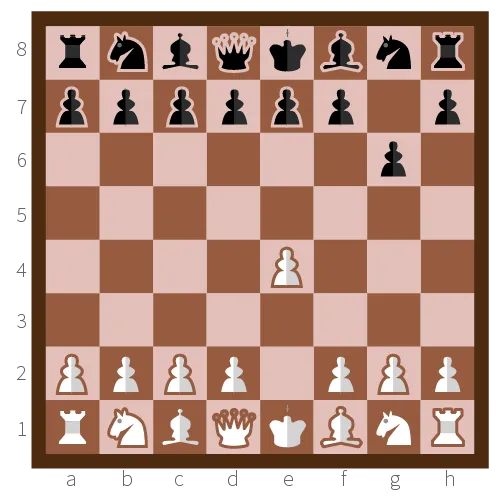
- e4 g6
Black allows white to occupy the centre at first, but will later seriously threaten it with moves like Bg7 and/or Nf6.
Nimzowitsch Defence
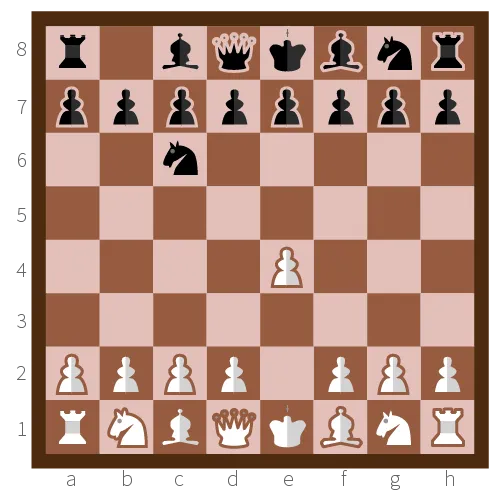
- e4 Nc6
Same idea as the Robatsch defence—white is allowed to play freely in the centre, but black will later on try to make the whole structure crumble with well-timed pawn advances and annoying knights.
Caro-Kann Defence
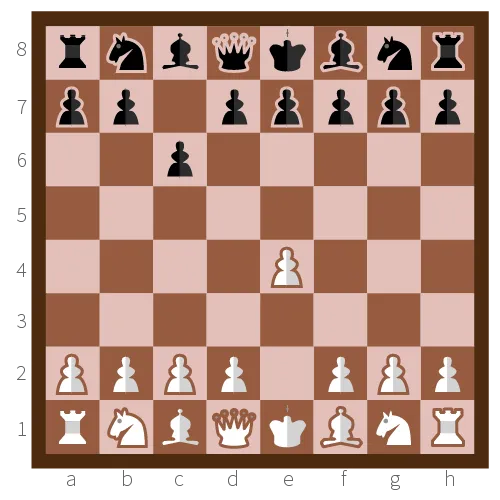
- e4 c6
A relatively surprising way for black to open. It sets up a good pawn structure near the centre, but constrains the knight and bishop. Usually leads to highly positional games.
Dutch Defence
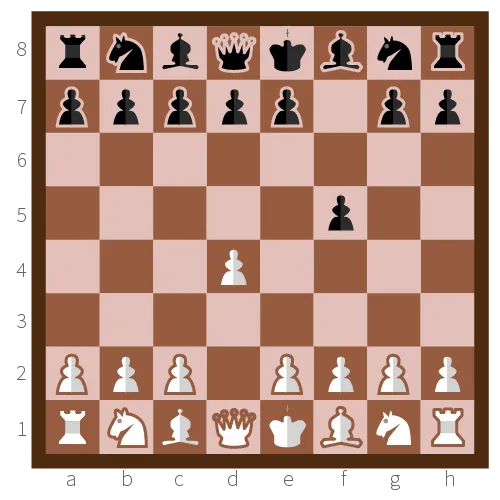
- d4 f6
If the opponent can’t handle it, it is very good and leads to beautiful games. If the opponent does know exactly how to deal with it, you’re going to have a hard time. Half of the players praise this opening, the others criticize it.
Slav Defence
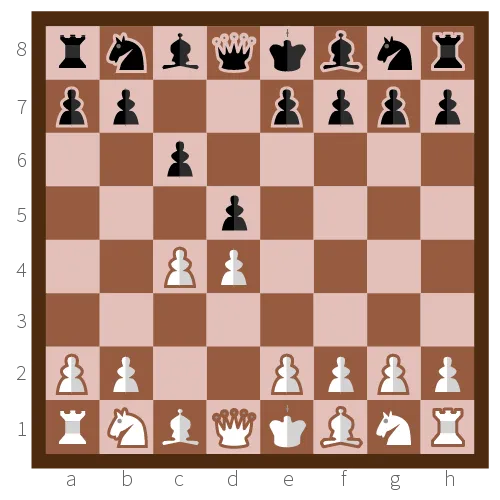
- d4 d5
- c4 c6
Originally invented as one of the best ways to decline a Queen’s Gambit. Very popular among grandmasters.
Remember…
These are not all openings. Not even close.
And although they are sorted based on statistics and winning percentages, there is no single best opening. You choose your opening based on your opponent and the type of game you want to play.
In fact, professional chess player usually study the previous games of their next opponent for days. So they are prepared for the exact opening they might play and how to counte rthat.
Analyse the opening of every opponent you run into. And always check the role your opening played in winning/losing/drawing a game. Learn new openings or variations regularly.
This is the one part of chess that can be “optimized” or “memorized”. We’ve simulated these openings and know the strongest moves in each.
Want to support me?
Buy one of my projects. You get something nice, I get something nice.
Donate through a popular platform using the link below.
Simply giving feedback or spreading the word is also worth a lot.